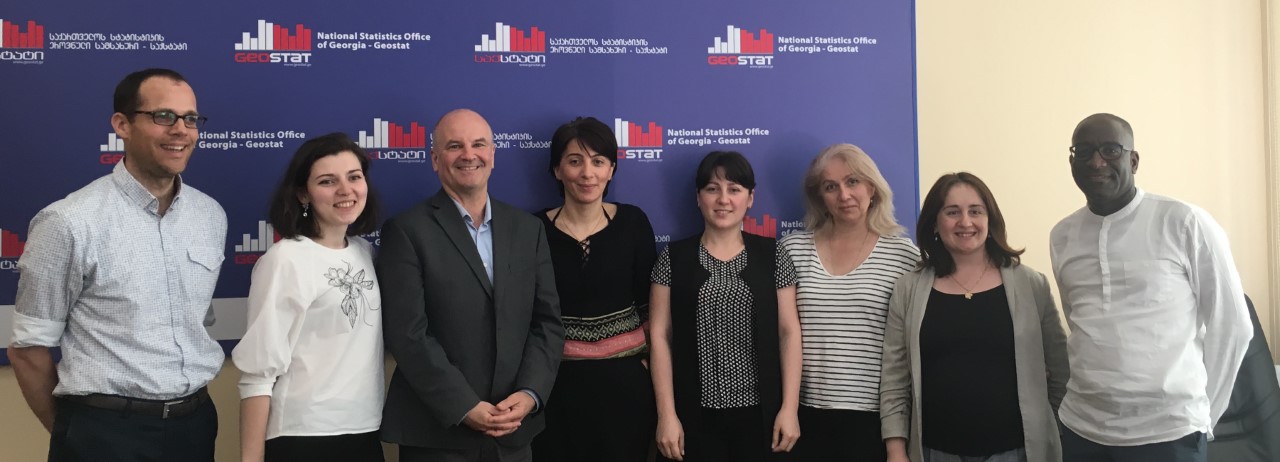| 20 May 2019 |
|
9 am – 5 pm
|
Opening
-
GEOSTAT
-
Tim Miller, Global Adviser on Population and Development, Population Division, DESA and Thomas Spoorenberg, Population Division, DESA
Session 1. Introduction
- Tim Miller, Global Adviser on Population and Development, Population Division, DESA
- 1.1 Why do we need population projections?
- 1.2 Why are we bad at making them?
- 1.3 The basic accounting identity of demography
- 1.4 The Lexis diagram
- 1.5 The cohort component projection method
- 1.6 Training exercise: Lexis diagrams
Session 2. Establishing the starting population
- Thomas Spoorenberg, Population Division, DESA
- 2.1 Evaluate the quality of the data
- 2.2 Deficient and incomplete data: methods for correction
- 2.3 Transfer the population to midyear
- 2.4 Training exercise: Preparing the starting population
|
| 21 May 2019 |
|
9 am – 5 pm
|
Session 3. Fertility component
- Thomas Spoorenberg, Population Division DESA
-
3.1 Analysis of past fertility trends: levels and age patterns
-
3.2 Training exercise: Baseline fertility data for Georgia
-
3.3 Projection of future fertility trends
-
3.4 Training exercise: Fertility assumptions for Georgia
Session 4. Mortality component
- Tim Miller, Global Adviser on Population and Development, Population Division, DESA
-
4.1 The life table
-
4.2 Assessing the completeness of register data
-
4.3 Training exercise: Constructing a life table
-
4.4 Projection of future mortality trends
-
4.5 Training exercise: Mortality assumptions for Georgia
|
| 22 May 2019 |
|
9 am – 5 pm
|
Session 5. Migration component
- Thomas Spoorenbeg, Population Division, DESA
-
5.1 Analysis of past migration trends: levels and age patterns
-
5.2 Training exercise: Baseline migration data for Georgia
-
5.3 Projection of future migration trends
-
5.4 Training exercise: Migration assumptions for Georgia
Session 6. National population projections
- Tim Miller, Global Adviser on Population and Development, Population Division, DESA
-
6.1 The components of the cohort component projection method
-
6.2 Detailed procedures for making population projections using the DAPPS software
-
6.3 Examining graphs and tables in DAPPS
-
6.4 Training exercise: A population projection for Georgia
-
6.5 How to design integrated scenarios
-
6.6 Training exercise: Integrated scenarios for Georgia
|
| 23 May 2019 |
|
9 am – 5 pm
|
Session 7. Subnational population projections
- Tim Miller, Global Adviser on Population and Development, Population Division, DESA and Thomas Spoorenberg, Population Division, DESA
-
7.1 Subnational components
-
7.2 Interregional migration
-
7.3 Insuring consistency with national projections
-
7.4 The Feeney method
-
7.5 Iterative proportional fitting
-
7.6 Detailed procedures for making subnational projections using software
-
7.7 Training exercise: Subnational population projections for Georgia
|
| 24 May 2019 |
|
9 am – 5 pm
|
Session 8. Innovations in data visualization methods
- Tim Miller, Global Adviser on Population and Development, Population Division, DESA and Thomas Spoorenberg, Population Division, DESA
-
8.1 How to present population results
-
8.2 Using indicators: population ageing
-
8.3 Quantifying projection uncertainty thru probability fans
-
8.4 3-D visualizations: R, 3D printing, and AR
-
8.5 Training exercise
Session 9. Conclusions and final discussion
Closing
|


